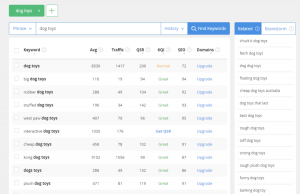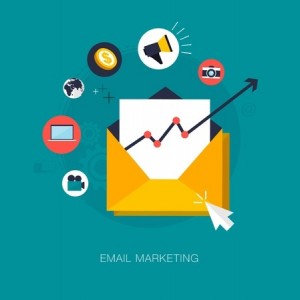— December 21, 2017

iAmMrRob / Pixabay
Having a rapidly loading website is an increasingly crucial factor of both user experience (UX) and search engine optimization (SEO).
Today’s user expect a website to load quickly, and those that don’t will likely experience negative consequences as a result. The Aberdeen Group conducted research that found a one-second delay in page load time yields 11% fewer page views, a 16% decrease in customer satisfaction and an 7% loss in conversions. Google has also indicated that site load speed is one of the signals used by its algorithm to rank pages.
As websites continue to evolve to become much more complex and content-heavy, it’s important to make sure your website is tuned to reduce page load speed as much as possible. And while there are numerous factors that affect page load speed—many requiring the aid of a proficient web development partner—there are a few actionable tweaks that can have a significant impact on reducing page load speed.
1. Optimize images and video
Some of THE biggest culprits increasing your webpage load time are images and video—as they take up a significant portion of a page’s overall size. And there are two distinct factors related to images and video: the size of each individual asset and the number of total assets being loaded on any given page. It’s important to address both of these factors.
Reduce the file size of all media assets
- Size your images appropriately – We’ve frequently seen clients make the mistake of uploading full-sized, 12 megapixel images without resizing first. Don’t upload a 6000 pixel wide image if its going to be displayed at 500 pixels. While retina is a consideration (2x), make sure the photos are sized according to the parameters of the design.
- Stick to JPG when possible – JPG is a compressed image format that maintains the integrity of the image, without wasting unnecessary space. So for the vast majority of applications, JPG is preferred. You should only use PNG when transparency is necessary. Avoid using TIFF and BMP altogether.
- Compress all photos – Even photos that have been appropriately sized are still going to be larger files than they need to be. Make sure that all photos are compressed, as compression can significantly reduce the file size, without dramatically sacrificing picture quality. At a basic level, you can export from Photoshop (or another image tool) using a “save for web” option. We’re big fans of Imagify because of its seamless integration into WordPress. There are also many image compression tools available online that you can also use.
- Compress all video – Video—especially high definition video—has the potential to be a significant speed hog. Be sure to compress each video using a video compression tool such as Handbrake.
- Embed using a 3rd party video hosting platform – It’s also a good idea to embed video using a 3rd-party video hosting platform such as Vimeo or Wistia to reduce the impact on your hosting server’s bandwidth.
Limit the number of total assets on each page
Keep in mind that the more images and videos you place on each page, the longer it will take to load. It’s important to be cognizant of the overall “size” of each page’s assets. Website features such as sliders (or carousels), background videos, large images and background textures may add interest to the website, but they also increase page load speed. Try to find a healthy balance between the visual aesthetics and user experience.
2. Leverage a caching, page speed plugin
There are a lot of factors that impact website page load speed, yet many are simply beyond the expertise of the average marketer. Fortunately, there are many helpful plugins or modules (depending on your CMS) that can assist with the technical heavy lifting. Page caching is another way to help improve your page load time. Cached pages are served up as static HTML versions of a particular page in order to avoid time-consuming queries to your website’s database. A cached web page loads much quicker—while decreasing server load by up to 80%. WordPress users can easily install one of the many popular page caching plugins such as W3 Total Cache.
A robust page speed solution for WordPress websites such as WP Rocket can not only handle page caching (replacing the need for a plugin like W3 Total Cache) but also a slew of other page-speed optimization methods such as:
- Enabling browser caching
- LazyLoading images and video
- Minifying resources (HTML, CSS, JS)
- Removing query strings from static resources
- Combining files (Google fonts, CSS, JS)
- Optimizing the database
- Loading CSS files asynchronously
- Loading JS files deferred
Note: While there are many options available in a page speed solution such as WP Rocket, be advised that there are potential risks. Deactivate options if you notice any visually broken items on your website.
3. Upgrade your web hosting package
The quality of your web hosting package can have a significant impact on your website’s page load speed—whether positive or negative. Especially for larger, more resource-intensive websites, and websites that generate a lot of traffic. While using an inexpensive, shared (or grid) hosting platform can be tempting, investing in a high-performing VPS, managed or dedicated web hosting platform should be a priority. These packages often use much faster technology stacks, as well as featuring dedicated resources and a host of important options to fine tune your server.
Other tips to speed up your website
As previously stated, there are many, many factors that affect your website’s page load speed. While some are within your control, many require the expertise and assistance of a web development partner. Here are several other considerations for improving your website page loading speed:
- Minimize HTTP requests – This gets down to the nitty-gritty of web development, but decreasing the total number of pieces of the webpage (such as images, scripts, etc.) that need to be loaded can reduce page load time.
- Enable Gzip compression – Gzip compresses your webpages and style sheets before sending them over to the browser. This reduces the page size by up to 70% which can also drastically reduce transfer time.
- Use a CDN (Content Delivery Network) – Leveraging a CDN can improve your site speed by hosting website files across a large network of servers around the world. This allows users to download files from servers that are close to them, and spreading the bandwidth decreases page load time.
- Configure server settings – Server software (such as Apache) out-of-the-box is not always sufficiently configured for optimal website performance. Consult with your hosting provider on how best to “performance tune” your server for your website and content management system (CMS).
Digital & Social Articles on Business 2 Community
(64)
Report Post






